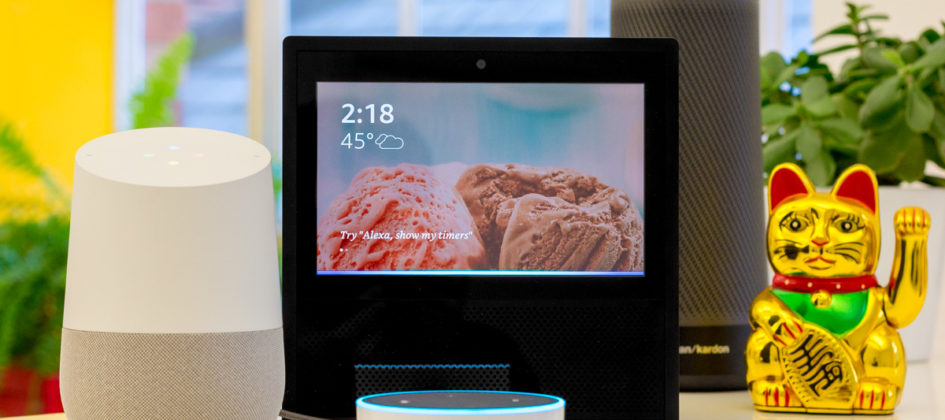
We write software that goes in front of millions of people every day. User experience is critical to the success of any system, and even more so with voice when displays and visual prompts are secondary or non-existent.
Matchbox works with forward-looking brands to define, create and support useful skills that deliver value quickly and reward longer-term engagement.
In the past two years we have worked with Amazon and its partners to create successful, delightful voice skills that bring high-profile brands into customers’ homes and anywhere Alexa is available – the car, the living room, the kitchen, and on mobile devices.
Our work combines consultancy, research, product design and planning, voice user interface design, software implementation, testing, deployment, market analysis, support and maintenance.

Portfolio
Matchbox has been developing skills on Alexa since its introduction to the market – with several published skills and many other demo skills at client locations for proof of concept purposes.
Penguin Books
A voice-driven interactive game based on the phenomenally successful Mad Libs books.
Philadelphia
Find the perfect cheese cake recipe, receive a breakdown of ingredients, and follow step-by-step instructions.
Amazon
Templates and tutorials to help developers create skills that offer a calendar reader, forum reader, location advisor, and Facebook authentication.
Travelodge
Hotel booking skill providing you with a quick way to make a reservation; choosing location, rooms, and extras.
BBC
Voice control for selecting, playing, and pausing radio programmes via Alexa.
Microsoft
Voice-controlled assistant using a shared Outlook calendar to let you know when meeting rooms are available.
Mobile Network Operator
Voice user interface offering you a quick and secure way to review your account, recent activity, and upgrade eligibility.
Traffic Intelligence
Ask Alexa for the quickest route to a destination or parking availability.
Broadband Routers
Secure voice control of your home router.
Insurance
A simple and safe way for elderly people to get emergency help.
Voice skill services
Define
Defining a scope for the skill so that it meets your business goals.
- Research and discovery
- Strategy and concept
- Feature prioritization and functionality
- User Stories
- Roadmap for ongoing skill evolution
Design
Designing the voice interactions for the skill.
- Invocation, user scripts, and utterance copywriting
- User Intents
- User Flow
- Custom SSML
Create
Implementing the skill concept and design.
- Integration of content
- Building databases, APIs, and skill functionality
- System architecture
- Technical development and QA
- Submission, approval, and publishing
Optimize
Updating and enhancing the skill.
- Analytics and review
- Monitoring and reporting
- Maintenance plan
Principles
Our approach to creating skills relies on fundamental ideas to help avoid wasted effort:
Identify the business goals for each skill
Make sure the features we put in the skill support those goals and are not simply gimmicks.
Be ruthless in assessing whether something should be a voice skill at all
We have well-established tools that serve us well – web, phones, tablets, and computers. A voice skill, by contrast, should be:
- Fast – it should be faster than tapping into a phone keyboard or clicking on a laptop.
- Natural to use hands-free – the user should find it natural to use the skill while otherwise occupied, to get the benefit without reaching for a device.
- Intuitive – encouraging the use of natural language, and inviting experimentation while leaving room for the ambiguity and broad range of human voice interaction.
- Personal and empathetic – using tone and human-like expression, in an appropriate setting, the skill should show it knows enough about the user to be helpful.
Understand the technology and the human context
Skill platforms evolve, and the voice interaction should not be tied exclusively to a particular device (like the Echo). Instead, think about the multiple contexts where a conversational experience might be possible.
Design for voice first
A lot of voice enabled devices also support screens or companion apps; we always ensure that the experience is complete without relying on visual prompts.
Practices
Practical considerations to ensure success for your voice skill:
Take a “crawl, walk, run” approach.
The first version of each skill should be simple, safe, and easy to use. It should be a platform for growth, supporting the addition of new features over time.
Understand the effort and initiatives that support and complement the skills.
For example, creating a content pipeline, and setting up relationships with content providers.
Trust real users and use market feedback.
- Test usability before you ship, and even before you write any code, with voice prototypes for representative users.
- Build room in your schedule for store review feedback and flexibility in your scope to address emerging usability or fundamental problems.
- Have a plan for rapid response to market reviews and a product roadmap to ensure the skills remain relevant and valuable.
Talk to us
Conversation is a new platform, and voice is a new and powerful interface. We know what it takes to help users enjoy a voice-based experience, and for you to deliver a successful voice skill. It starts with an honest conversation about who you are, whose needs you serve, and why voice could be the way to delivering value and enjoyment for both you and your customers.



